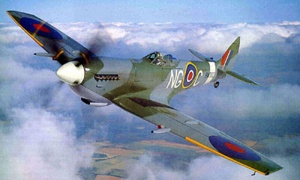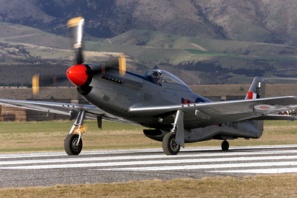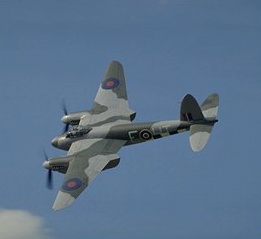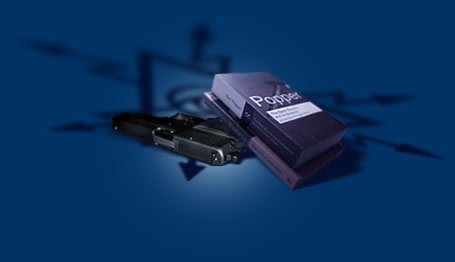We are developing the social individualist meta-context for the future. From the very serious to the extremely frivolous... lets see what is on the mind of the Samizdata people.
Samizdata, derived from Samizdat /n. - a system of clandestine publication of banned literature in the USSR [Russ.,= self-publishing house]
|
The name Hollings rang some bells, but I just couldn’t place it. I Googled him and nearly drew a blank… except I found his name is Ernest “Fritz” Hollings. That clicked. I dug back into my old email queues and notes from the days when I ran Pittsburgh L5 and found a cryptic lead. I had angrily called Hollings office on February 21st, 1986. All I could tell from the phone log was Hollings had done something I’d considered utterly despicable at the time and that it had to do with the Challenger disaster.
What else to do but call on friends like Glenn Reynolds to do a quick Lexus search? And now I’ve got it.
Senator Ernest “Fritz” Hollings (D, Times-Warner) tried to grandstand on the corpses of 7 dead astronauts. While submarines were still looking for key bits of debris on the ocean floor and the Rogers Commission was starting the long difficult job of sifting the evidence, Hollings was trying to grab headlines by calling for Senate Investigation. As reported in the MacNeil Lehrer Report transcript of that day:
LEHRER: Key members of the U.S. Senate went to war today over the shuttle Challenger investigation. Democrat Ernest Hollings fired the first round, holding a news conference to call for the resignation of NASA chief William Graham and for a Senate investigation of the Challenger accident. Hollings also had critical words for the presidential commission which is already investigating.
Within that context the log entry for my phone conversation with Gary Oleson (head of the Washington DC-L5 chapter) makes it clear why I was ticked off enough to call a Senator in another state:
Gary Oleson: looks like a setup. Jesse Moore is from S. Carolina, knows Hollings, and just moved to JSC [Johnson Space Center] post, puts him in line for running NASA if Graham gets the boot. Graham is evidently being fed incorrect info and the commission is being told that he’s going to give them incorrect info. Hollings, with GHR [Gramm-Hollings-Rudman] amendment under his belt is headline grabbing and has nothing to do with investigation. We have already notified chapters in SC. We’ll try to nail Hollings.
So this isn’t my first run in with this…. person.
And by the way… there’s a new Hollingsgate article over at Instapundit.
40 years ago today John Glenn rode his Mercury-Atlas rocket into the pages of history. His short mission in the Friendship 7 capsule was the first American manned orbital flight.
I was just checking in at Xcor to see what they’ve been up to the last week or two. No new flights listed, but they are selling this really neat poster. Go for the signed copies. If they manage the next step – suborbital – it will be like having the autographs of the Mercury 7 team from 1960.
Besides – all you old net heads from the days of Space Digest know at least three of the people in the photograph besides Dick Rutan: Jeff Greason, Doug Jones and Aleta Jackson.
By buying one you’ll help fund the research program which will let you to go up some day soon.
Yes, I do have an interest in this. I know and like some of these people, I want them to succeed… and I want to go myself.
The FAA released AD 2001 06 22 a few months ago. This AD grounds all B17 Flying Fortresses until inspections of the wing spar have been carried out:
SUMMARY: This amendment adopts a new airworthiness directive (AD), applicable to all Boeing Model B-17E, F, and G airplanes, that requires inspections to detect cracking and corrosion of the wing spar chords, bolts and bolt holes of the spar chords, and wing terminals; and correction of any discrepancy found during these inspections. This amendment is prompted by reports of cracking and corrosion of the wing spar. The actions specified by this AD are intended to prevent reduced structural integrity of the wing of the airplane due to the problems associated with corrosion and cracking of the wing spar.
Sgt Stryker reports on an idea batted around ten years ago in the Spring ’91 Air Power Journal: fill obsolete aircraft with explosives and use them as remote controlled flying bombs.
It’s been done. The earliest I can think of off the top of my head was the secret mission in which Joe Kennedy Jr. died in WWII. He volunteered to pilot a B-24 Liberator packed with 20,000 pounds of plastic explosives from takeoff to altitude. He and the co-pilot were then to bail out. The Liberator was then to be flown by remote control from another aircraft… and crashed into its’ target. Unfortuneately the aircraft exploded before Kennedy and his co-pilot bailed out.
This month’s Aeroplane carries a story about “A Cat With Nine Lives” which mentions in passing that a number of Grumman Hellcats were flown into North Korean targets with a less than 50% success rate. Between August 28th and September 2, 1952 six drone Hellcats carrying 1000lb bombs were flown into a power station, a bridge, a railway tunnel and other targets. The Hellcats were controlled by AD-4N Skyraiders of VC-35.
Guess there is nothing new under the sun…
erratum: I realized this morning that I’d said Flypast instead of Aeroplane, as both new issues were sitting on my desk and I confused which one I’d just read which article in… I’ve corrected this above.
Addendum: a reader in Traverse City, Michigan pointed out a secret robot bomber project from WWII that I was completely unaware of. Information can be found here and here.
Greg Nemitz, one of the founders of TransOrbital has reported in the Artemis Society e-mail digest that Paypal will be going public early next week, possibly Monday. What is particularly interesting about this IPO over others is Elon Musk, the largest shareholder of Paypal, has dedicated his wealth to opening Mars.
Paypal presently has 12-13 million members.
Steven Den Beste has replied to my remarks about World War Two aircraft. Tally ho!
Perry’s British sensibilities do not need to be defensive about that, because the British contributed nearly as much to the success of the Mustang as did the Americans.
It has nothing to do with my ‘British sensibilities’ but I do know a thing or two about aerocraft of the era.
As a Brit, it was inevitable that Perry should be nostalgic about the Spitfire. In 1940 there was no better air defense fighter in existence, and the UK damned well needed it. Twice as many Hurricanes fought in the Battle of Britain than Spitfires, but it was the Spitfires which made the difference because the Hurricanes were not really able to stand up to the 109’s. That said, it has to be recognized that as an all-around fighter, the Spitfire had major weaknesses, especially compared to later designs. Its airframe wasn’t as rugged as those the Americans built, and for most of the war it was undergunned (because it relied on .30 caliber machine guns). And its biggest weakness all through the war was short legs; it simply could not carry enough fuel for anything except defense.
I will try not to get too irked that Steven seems to imply that my presumed nationality somehow skews my historical judgement. He also should have read my article more carefully. I said I was talking about mid-to-late war piston engined fighters (the P-51 was not around in the early war period), and what Steven is describing is a 1940 Battle of Britain era Spitfire I. By 1941 all (non-PR) Spitfires, from the Spit V onwards, were armed with two 20mm cannon as well as (usually) four .303 machine guns. It is the lack of cannon armament in the P-51 to which I was referring. More importantly all the Luftwaffe fighters which the USAAF were facing were cannon armed aerocraft. Of course it was not a decisive flaw because the six 50 cal HMGs favoured by the USAAF were good enough.
When most aficionados of WWII aircraft speak of “the best”, it mainly becomes a question of sending 8 of each into the air to duke it out and see how many of each come back. On that basis, the Spitfire would not have rated against the Mustang because of the Spit’s final drawback: it wasn’t as fast. In combat, speed is life. Which doesn’t take anything away from the Spitfire’s designers; North American designed the Mustang six years later and had learned much.
Quite incorrect. Stephen seem to be again comparing the 1940 Spitfire I with the 1943+ Mustangs, rather than the Spits that were flying at the same time as the various marks of Mustang (such as the Spit IX or the formidable Spit XIV or Spit XIX). In fact, there was never really anything to choose between the two fighters in terms of speed because as the newer versions of Mustang came out, so did the newer versions of Spitfire. There were many versions of the P-51 and even more of the Spitfire and the Spits in particular had many sub-variants optimised for certain altitudes making the comparisions even harder. In fact the late war Griffon engined Spitfires were generally both faster, better armed and more heavily armoured than the directly contemporary Mustang versions. But this also goes to show the fallacy of comparing them at all: the Mustang was fighting most of its battles at very high altitude over Germany, for which it was optimised and handled beautifully, whilst the Spitfires were fighting at low to medium altitude over the battlefront or defensively over Britain, neither of which required long range. Certainly Spitfire LF variants would be able to outfly a Mustang of equal era at low altitude by a significant margin, but that is not really what Mustangs were for, even if they were occasionally used that way, so is it even a useful comparison?
Perry brings up night-fighters. They were important (especially to the RAF, which did most of its bombing at night) but most people don’t consider them to be the same kind of thing. Night fighters had to be larger because they had to carry radar. There was much less emphasis on maneuver because night fighters didn’t tangle with each other, so most of the emphasis was on simple ability to carry weight. The Mosquito made a decent night fighter, but it could never have competed during the day. (It is noteworthy that the ME-110 was meat on the table during the day but ended up being a pretty decent night fighter.)
The fact is RAF nightfighters did indeed operate against Luftwaffe nightfighters. For much of the war, hunting German nightfighters was the primary RAF nightfighter mission, both as escorts to the RAF night bomber streams and as night counter-air intruders over German airfields. If you want to know more about that I strongly recommend History of the German Night Fighter Force by Gebhard Aders. It is written from the German point of view and is a superb book, pretty much the definitive work on the subject of the night air war in WW2.
Also to compare a Mosquito (of any mark) with an Bf.110 is like comparing a Ferrari with a Pinto. Mosquitos did indeed operate against single engined day fighters in a way that would have been suicide for a Bf.110. There are a host of books on the history of the Mosquito, but I would recommend Mosquito by C. Martin Sharp & Michael J. F. Bowyer, if you want to see a very broad range of information and statistics of all versions. By day, what it could not outfight it could outrun (until the jets arrived of course). Mosquito day fighter-bombers (mostly the FBVI version) regularly clashed with high performance single seat fighters like the formidable Fw. 190 and were quite capable of holding their own. For some excellent accounts of Mosquito tactical day and night operations, I recommend 2 Group RAF: a compete history. 1936-1945 by Michael J. F. Bowyer, which I have just finished re-reading.
[…] If one really wants to open up all the stops and say what the best fighter of the war, anyplace, anytime was on the basis of “send 8 up and see how many come back” then there is no question of the choice: it would be the pure fighter version of the ME-262. With a hundred mph edge in speed and a decent weapons load, it was deadly. It is fortunate for us that Hitler had his head wedged and ordered the majority of ME-262’s to be equipped as fighter-bombers.
Maybe, maybe not. There are many historians who disagree with that widely held view and contend it was production problems, not the so called ‘bomber directive’ that was actually the reason so few Me-262’s ever became operational.
Update: As a couple people have asked me to recommend some sources regarding my remarks about the Mosquito, I have edited the article to include two in the text above.
Steven Den Beste treads where 100,000 aeropundits have gone before
Ultimately, they switched to the Mustang, which was the prestige fighter of the European theater; beautiful, fast, deadly and long ranged: it was the best fighter the Allies had in Europe, and for bomber escort they needed every bit of it, especially after the Germans began to fly the Me-262.
Best fighter is truly meaningless unless it is stated what specific role it was best for. The P-51 Mustang was without doubt the most effective long range piston engined daylight escort fighter of World War II. Of the mid-to-late war piston engined fighters, it was not the best defensive fighter (Fw.190-D or Spitfire 19) or nightfighter (He.219 or Mosquito, various) or day/night intruder (perhaps Mosquito FBVI) or multi-role fighter (no clear winner).
Comparing fighters with different roles is pointless and thus there was no single ‘best fighter’, just ‘best fighter in some role’. The P-51 had good all round performance, very good cockpit visibility and most importantly had the range to carry out the strategic escort mission that other even higher performance piston engined fighters did not have. But as all combat aerocraft do, it also had its weak points and like all USAAF fighters of the time was certainly under-armed by 1943-1945 standards and had GC issues at some weights. How about “The P-51 Mustang was the most important USAAF daylight fighter of the European Theatre in mid-to-late World War II period”. A much safer contention.
16 Years ago today, 7 honoured members of the space community gave their lives for the dream we all share. I and others in that community pledge to carry their names to the stars.
Dick Scobee
Mike Smith
Judy Resnick
Ron McNair
Ellison Onizuka
Greg Jarvis
Crista McAuliffe
I raise my glass. We will never forget you.
Some interesting observations from the good folks as Fevered Rants regarding the prospect of unmanned aircraft being the wave of the future. Is the manned combat aircraft soon to be a thing of the past?
I agree that we will be seeing more and more of a role for UAVs but there are also some serious weaknesses in the theory that they will completely supplant manned fighters. Against the likes of Iraq, Serbia and Afghanistan circa 2001, UAV’s have much to commend them. Yet sooner or later (probably later) the USA will have to fight an enemy who will have access to technology much closer in quality to that which is available to America itself…which means high quality sophisticated electronic warfare (EW). One of the realities of EW is that you can never be quite sure of what the enemy can do until he does it and it is a hell of a lot cheaper to jam the controls of a UAV than it is to fire a missile at one. However the only way to completely jam a manned aircraft is with a fast moving object (like a missile or cannon shell).
Congratulations to Steve Bennett on the unmanned test flight over Britain of his 38 foot (11 metre) Starchaser rocket. The launch took place at Morecambe Bay in Cumbria.
Bennett described the launch as being “85% successful” due to the fact that two of the three parachutes became entangled, causing the expended reusable rocket main body to return to the mud flats of Morecambe Bay rather faster than hoped for. The unmanned passenger capsule detached and landed perfectly however. Despite having many detractors, Bennett intends to be the first passenger once the rocket is ready for its maiden manned flight.
This is yet another indication that privately built and funded manned spaceflight is drawing ever closer. I wish Bennett and all the other pioneers of non-governmental spaceflight the very best of luck… for they are the very best of us. Per Ardua ad Astra
Airbus Down Jim Bennett contacted me with an obvious correction: the DC-10 had 3 engines, not 4. Two on wing pylons and one on the empennage However he still agrees that it was a more stable configuration as one engine was near the centerline.
Yet another example of insta-correction brought to you by the magic of the global Internet…
|
Who Are We? The Samizdata people are a bunch of sinister and heavily armed globalist illuminati who seek to infect the entire world with the values of personal liberty and several property. Amongst our many crimes is a sense of humour and the intermittent use of British spelling.
We are also a varied group made up of social individualists, classical liberals, whigs, libertarians, extropians, futurists, ‘Porcupines’, Karl Popper fetishists, recovering neo-conservatives, crazed Ayn Rand worshipers, over-caffeinated Virginia Postrel devotees, witty Frédéric Bastiat wannabes, cypherpunks, minarchists, kritarchists and wild-eyed anarcho-capitalists from Britain, North America, Australia and Europe.
|






